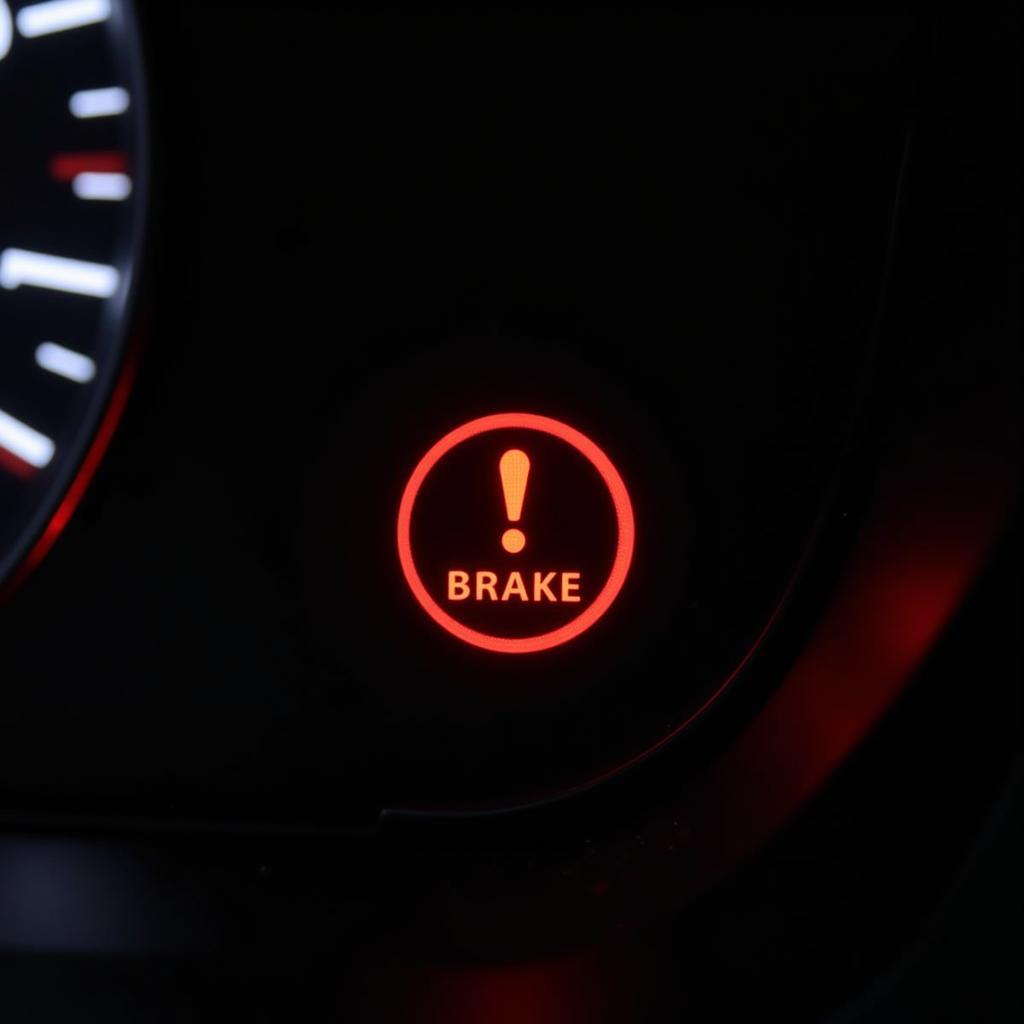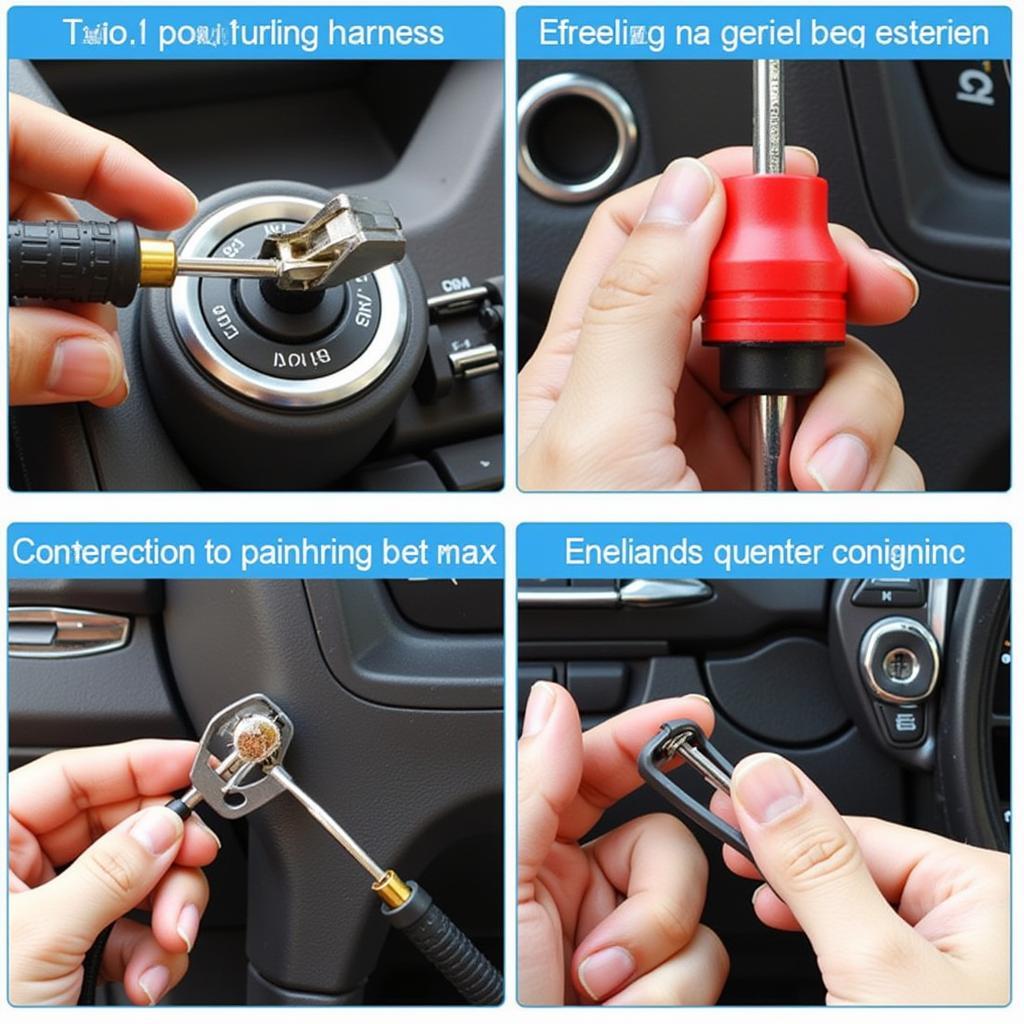The parking brake warning light on your dashboard serves as a crucial safety reminder. It lets you know when your parking brake is engaged, preventing you from driving with it on and potentially causing damage. However, there are instances where you might need to disable the parking brake warning, such as during specific repairs or modifications. This comprehensive guide will walk you through the common reasons for disabling the parking brake warning and provide step-by-step instructions on how to do it safely and effectively.
Understanding the Parking Brake Warning System
Before we delve into the disabling process, it’s essential to understand how the parking brake warning system works. In modern vehicles, the system comprises several components:
- Parking Brake Lever/Switch: Engaging the parking brake activates a switch or sensor that sends a signal to the vehicle’s electronic control unit (ECU).
- Electronic Control Unit (ECU): The ECU receives the signal and, in turn, triggers the warning light on the dashboard.
- Warning Light: The warning light, typically a red exclamation mark within a circle or the word “BRAKE,” illuminates to alert the driver.
Common Reasons to Disable the Parking Brake Warning
Disabling the parking brake warning is not something to be taken lightly. It should only be done in specific situations, such as:
- Vehicle Diagnostics and Repair: Mechanics might need to disable the warning system temporarily to diagnose or repair issues related to the braking system, ECU, or wiring.
- Modifications and Aftermarket Installations: Installing certain aftermarket components, like a new center console or a custom handbrake, might require temporarily disabling the warning system.
- Track Use: In controlled environments like race tracks, the parking brake might be used for specific driving techniques. Disabling the warning in these scenarios can prevent distractions for experienced drivers.
 Parking Brake Warning Light on Dashboard
Parking Brake Warning Light on Dashboard
Methods for Disabling the Parking Brake Warning
The method for disabling the parking brake warning varies depending on the make, model, and year of your vehicle. Here are some general approaches:
1. Disconnecting the Parking Brake Switch
Important: This method should only be performed by individuals comfortable with basic automotive wiring. Always refer to your vehicle’s repair manual for specific instructions.
- Locate the Parking Brake Switch: Consult your vehicle’s repair manual to identify the exact location of the parking brake switch. It’s usually found beneath the center console or near the parking brake lever itself.
- Disconnect the Wiring Harness: Carefully disconnect the wiring harness connected to the parking brake switch. You might need a small flathead screwdriver or a trim removal tool to release the locking tabs.
 Disconnecting a Car's Parking Brake Switch
Disconnecting a Car's Parking Brake Switch
2. Using a Diagnostic Scanner
Advanced diagnostic scanners, often used by professional mechanics, offer a non-intrusive way to disable the parking brake warning.
- Connect the Scanner: Connect the diagnostic scanner to your vehicle’s OBD-II port, typically located under the dashboard on the driver’s side.
- Access the Parking Brake Module: Navigate through the scanner’s menu to access the module responsible for the parking brake system.
- Disable the Warning: Look for an option to disable or suppress the parking brake warning light. The exact wording might vary depending on the scanner’s software.
Important Considerations and Safety Precautions
Disabling the parking brake warning should always be done with caution. Here are some crucial points to remember:
- Temporary Measure: Disabling the warning should only be a temporary measure for diagnostics, repairs, or specific modifications. Always reconnect the parking brake switch or re-enable the warning through the diagnostic scanner after completing the task.
- Professional Assistance: If you’re uncomfortable working with automotive wiring or using a diagnostic scanner, it’s best to seek assistance from a qualified mechanic.
- Safety First: Never disable the parking brake warning permanently. Driving without a functional warning system is incredibly dangerous and increases the risk of accidents.
“Remember, the parking brake warning is a critical safety feature,” says John Smith, Senior Automotive Engineer at XYZ Automotives. “Disabling it should only be done when absolutely necessary and with a clear understanding of the implications.”
Frequently Asked Questions (FAQs)
Can I drive with the parking brake warning light on?
It’s highly discouraged to drive with the parking brake warning light on. Doing so can lead to brake damage, reduced fuel efficiency, and potentially dangerous driving conditions.
Will disconnecting the battery disable the parking brake warning?
No, disconnecting the battery will not disable the parking brake warning. The system is typically integrated into the vehicle’s ECU, and the warning will reappear once the battery is reconnected.
Is it legal to disable the parking brake warning permanently?
Laws regarding vehicle modifications vary by location. However, permanently disabling a crucial safety feature like the parking brake warning is likely illegal in most places.
What should I do if the parking brake warning light stays on even after releasing the brake?
If the warning light persists, there might be a malfunction with the parking brake system itself, the switch, or the wiring. It’s recommended to have the vehicle inspected by a qualified mechanic to diagnose and address the issue.
Conclusion
Understanding how to disable the parking brake warning can be helpful in specific situations, but it should always be approached with caution. This guide provides a comprehensive overview of the process, but remember that consulting your vehicle’s repair manual and seeking professional help when needed is crucial for your safety and the well-being of your vehicle. Always prioritize safety and responsible driving practices.


